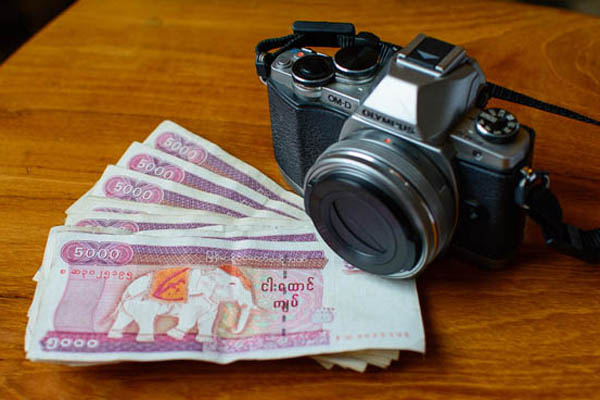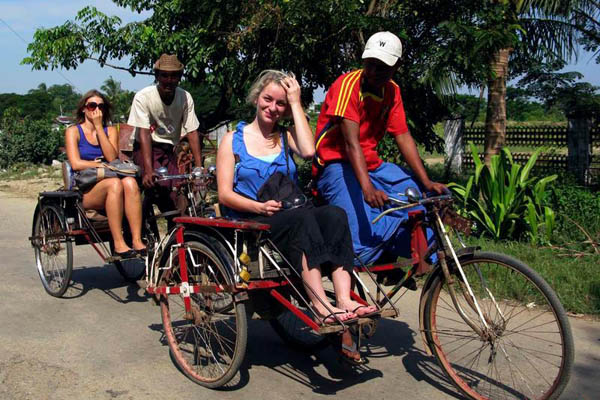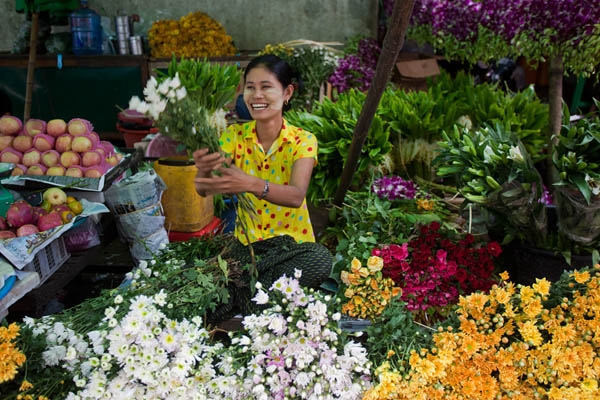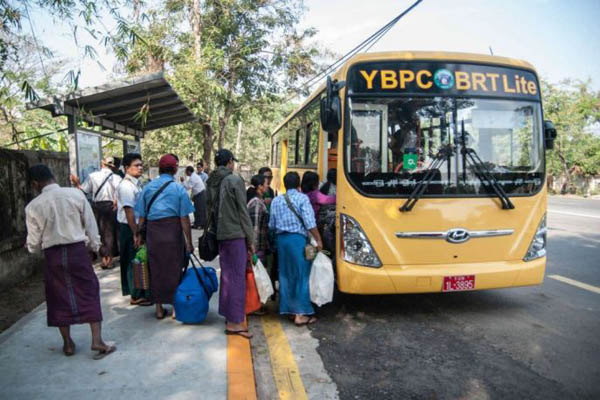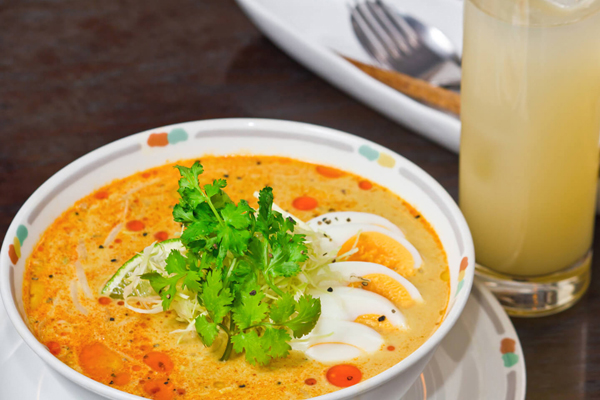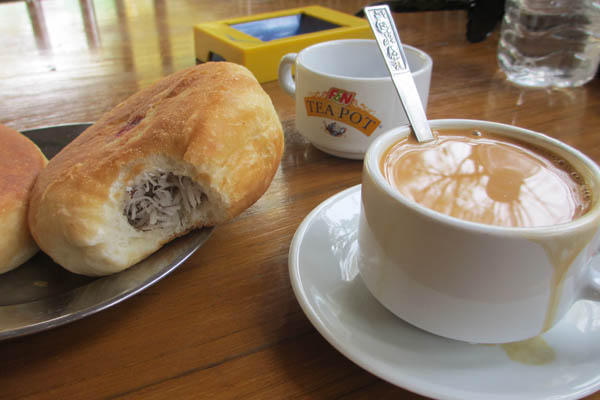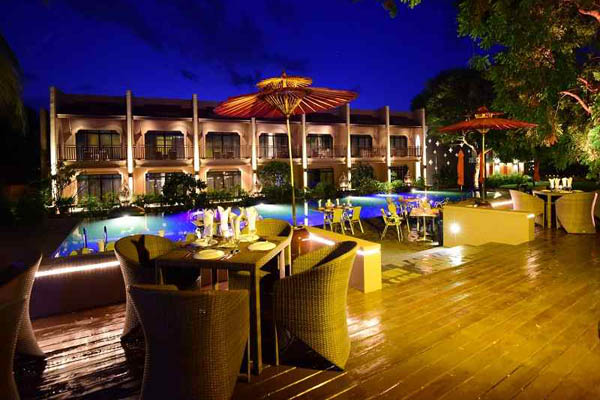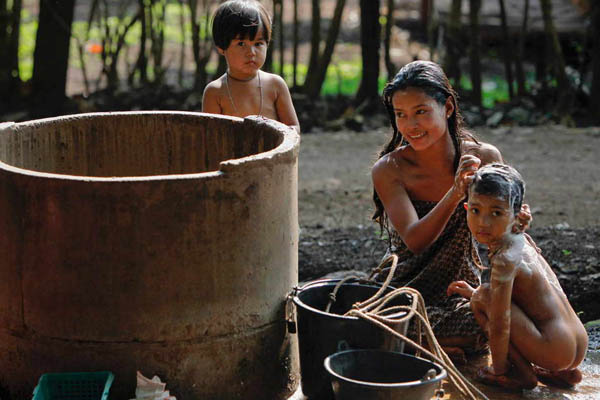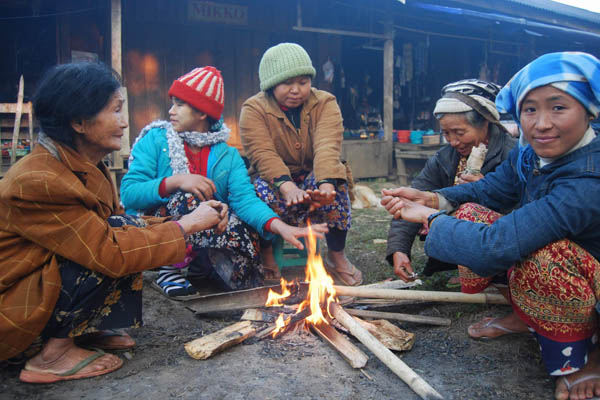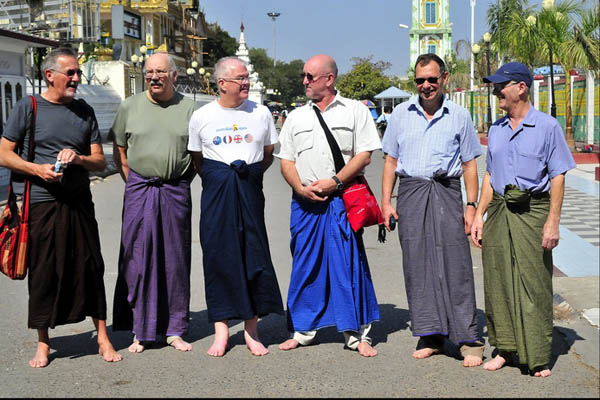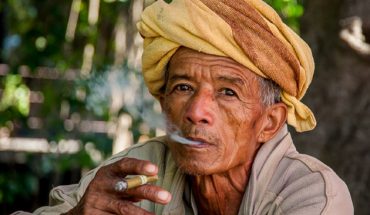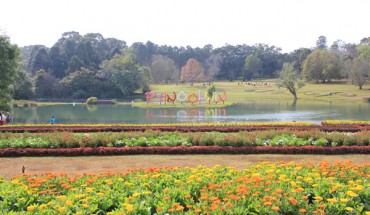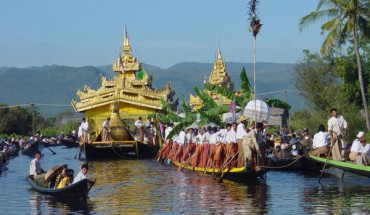With Buddhist, Hindu, Muslim and Christian communities and dozens of different ethnics, Myanmar offers travelers a rich tapestry of peoples and cultures to explore. It’s possible to plan a one-day itinerary that exposes you to food and traditions with origins in China and India and Rakhine and Shan states. While many local practices feature in other societies elsewhere in South and Southeast Asia, however, there are numerous ways in which daily life here is unique and a few business practices that may surprise even the well-traveled visitor. You’ll be in good shape if you plan ahead and respect and embrace Myanmar ways. Here are a few things you should keep in mind:
Always carry cash
A combination of crisp, new American bills in addition to a good supply of Myanmar notes is a necessity. Shopkeepers will sometimes demand payment in American bills but refuse to accept ones that are dog-eared or torn. The same goes for money changers. If you’re travelling outside the major centers, there may be limited or no access to ATM machines.
Try the local transport options
In Yangon, riding in a trishaw, also known as a side car, might rightly be perceived as a dangerous proposition. But in smaller centres they’re often an effective and fun mode of transport. They’re also much more comfortable than they first appear. You can also try pony carts in places like Bagan and Pyin Oo Lwin, and boat rides at Inle Lake. In Yangon, consider riding the circle train. A complete three-hour loop for a foreigner costs about US$ 1 and gives you a slow, scenic view of various townships.
It’s okay to bargain, but don’t be a cheapskate
In informal transactions, such as at a wet market or negotiating a taxi fare, it’s acceptable to bargain for a lower price. The best strategy is to be friendly and consider whether the price you expect will cause your driver or shopkeeper to lose money. Keep in mind that guidebooks go out of date quickly, so a price listed in a guide from just two years ago may not represent today’s fair prices.
Buses are a great way to travel, but go prepared.
While there are an increasing number of short-haul budget flights available inside Myanmar, some places are still most easily and comfortably accessible by buses. For a few extra dollars, a VIP bus will be equipped with air-conditioning and extra-wide seating. The food available on board and at rest stops, however, leaves something to be desired. If you want to avoid oily or overpriced fare, stock up before you go on bottled water and snacks.
Take a taxi
Standard practice in places like Yangon is to negotiate the fare in advance, since most cars are not equipped with meters and those with meters do not use them. If you don’t know what the fare to your destination should be, inquire beforehand with a local or staff at your hotel. Short trips may be as little as K1500, while K4000 should cover a significant distance, depending on traffic and time of day. Expect to pay more after 10pm, but it’s reasonable to bargain if you suspect the first- named price is too much.
Forage for your breakfast
Many hotels will provide a complimentary breakfast. It might be convenient, but you’re missing out. At street stalls, you can find local breakfast specialties such as mohinga. a fish and noodle curry, and an array of fresh fruits and juices. Tea shops, offer strong cups of milky laphet yey (literally, tea water) and various pastries such as samosas or Chinese steamed pork buns, depending on the ethnicity of the owners.
Be in control of your sugar and monosodium glutimate (MSG) intake.
First-time visitors to Myanmar are sometimes shocked by the amount of sugar mat locals consume in the form of beverages like tea with condensed milk and fruit juice. Expect that your fresh banana or watermelon smoothie will have a heaping tablespoon of sweetener in it, unless you request otherwise. The way to ask for less sugar is thajar shob htetpar. Similarly, some restaurants add MSG to their food. The way to ask for no MSG is ar cho mhote rna htet ne.
Book hotels and guest houses in advance
This is especially wise if you’re travelling in peak season. The number of expected tourists to Myanmar has gone up tremendously in me past couple of years, to 3 million in 2014. Although investors are pouring money into the tourism industry, for the moment the supply of hotel rooms is modest. You might consider booking through a travel agent, of which there are many in Yangon and Mandalay. A travel agent can help you save time and stress.
Pack a few basic essentials everywhere
Sunscreen, insect repellent, ear plugs and a headlamp or flashlight. As in other parts of Asia, you can find sunscreen and insect spray in local shops and supermarkets but not many of the brands that you would find in Western countries. Bring your own if you want quality assurance. Earplugs are a necessity if you plan to be travelling by bus – most play hours of pop music videos or soap operas, sometimes until wee hours of the morning. A headlamp will save you trouble on days of unexpected power outages, on treks and, in small towns, the hours just before and after dark when electricity may not be available.
Off the beaten path really is remote
Be aware that some towns and villages may not have any services geared toward tourists, except for a couple small snack shops. If you’re going into areas less accustomed to tourists, plan ahead and be prepared to rough it. Hsipaw, Namshan and Putao, for example, are great places to go trekking. But if you’re looking for hot showers and a choice of dinner plans, these places may not be for you.
Plan for the season
For most activities, the best time to visit Myanmar is the cool season between November and February. But if you’re visiting during the rainy season, June to September, try Upper Myanmar – the plains region of Bagan and Mandalay – which stays relatively dry. If you are visiting in the cool season, also be aware that Bagan and northern regions like Shan State will be chilly enough that you’ll want to pack pants, layers and a jacket.
How you dress is how you will be judged
Dress across Myanmar tends to the conservative side. You won’t see local ladies wearing sleeveless tops, even at me beach, and only in big cities will some girls sport miniskirts or leggings.
Expect some extra attention, or reluctant service in small shops, if you do. When visiting a temple or monastery, opt for long pants or the traditional longyi, covered shoulders and no cleavage. Otherwise you may be denied entry or, if you’re lucky, you can loan a longyi.
A kissing sound will get a waiter’s attention
It might seem like a rude thing to do, but whether you’re at a tea shop or a beer station, you’ll hear locals pucker their lips and make a sound like a cat-call to order a beverage or get the bill. It’s perfectly acceptable and much more effective than waving your arms.


